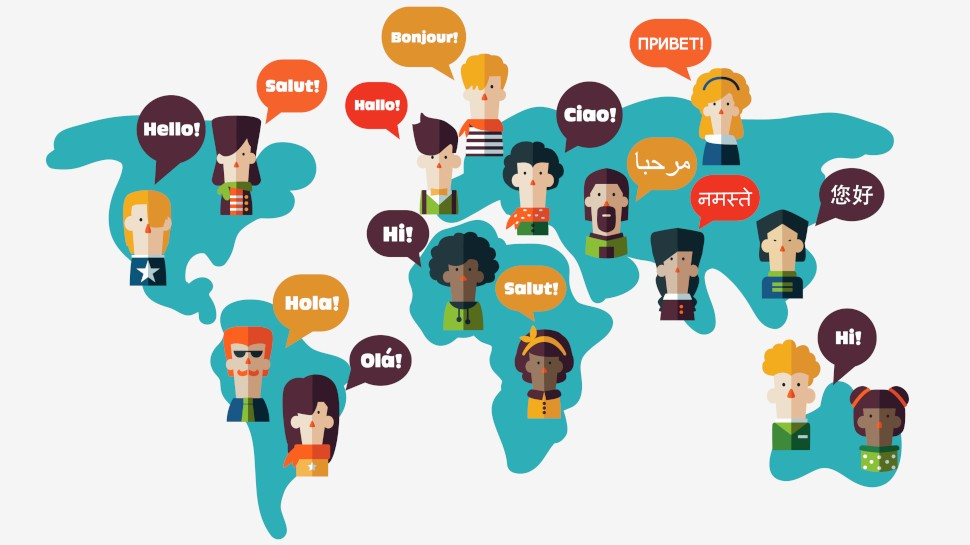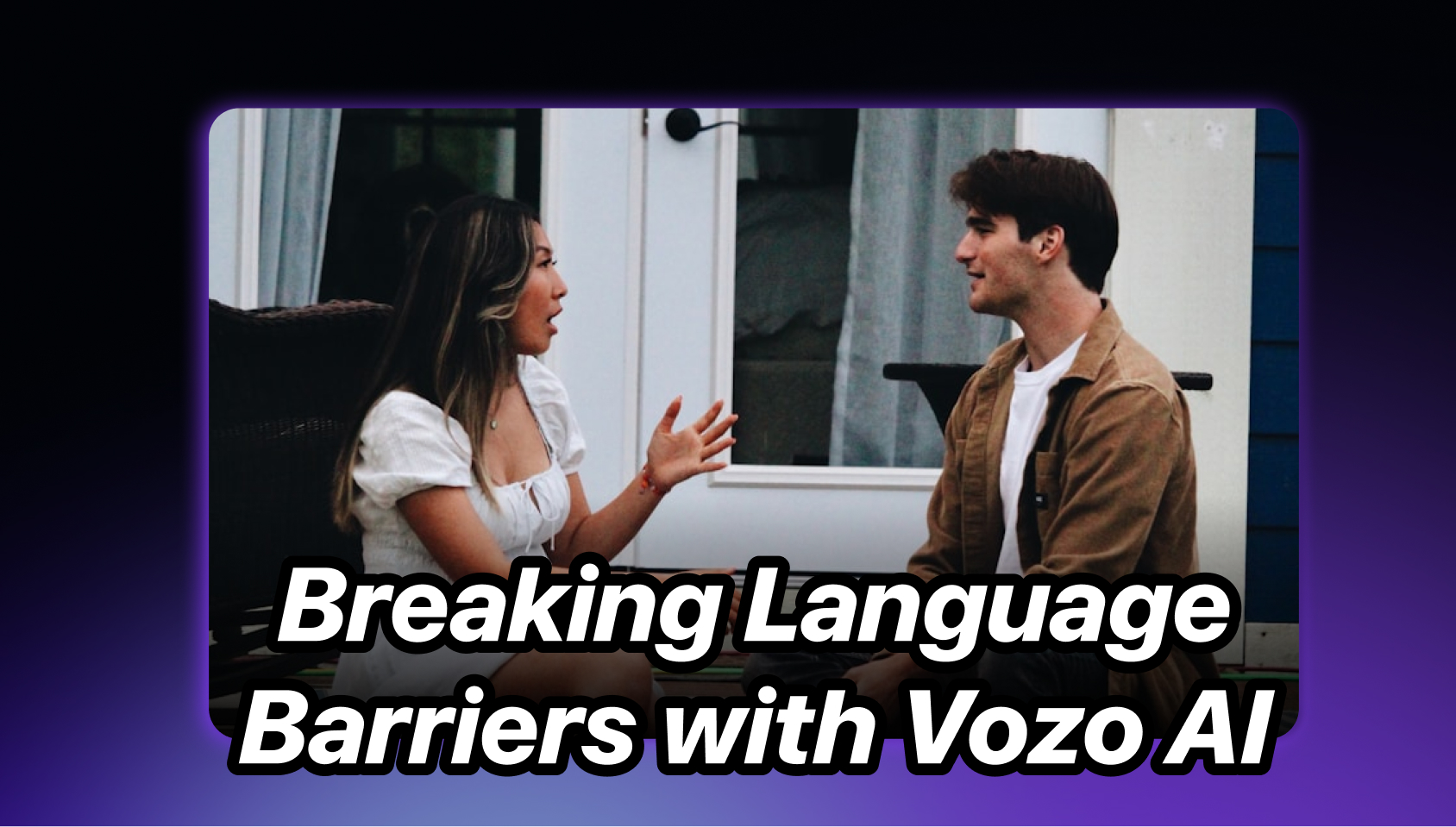Intro
In today’s globalized world, language barriers can significantly hinder effective communication and collaboration. As content creators strive to reach wider audiences, overcoming these barriers becomes crucial for success. This article explores the challenges posed by language differences, the role of video translation in bridging these gaps, and how Vozo AI Video Translator is leading the charge in breaking down language barriers.
The Challenges of Language Barriers
Global Content Dissemination
Language barriers present significant challenges in disseminating content worldwide. The complexity of language expression, including idioms, slang, and cultural references, can create misunderstandings that limit the effectiveness of communication. For businesses, this can lead to missed opportunities, as potential customers may feel excluded or misunderstood due to language differences. Research indicates that consumers prefer to engage with brands that speak their language; thus, failure to provide translated content can hinder market penetration. In educational settings, language barriers can obstruct learning and limit access to vital resources, preventing students from benefiting fully from available information. This lack of accessibility can widen the educational gap, particularly in regions where resources are already scarce. Additionally, cultural nuances often complicate the translation process, as a literal translation may not convey the intended meaning, further exacerbating communication issues.
Impact on Audience Engagement and Brand Perception
Language barriers also directly affect audience engagement and brand influence. When content is not available in a viewer’s native language, it may lead to lower engagement rates and diminished brand loyalty. Studies have shown that consumers are more likely to connect with brands that communicate in their language, emphasizing the importance of effective translation in marketing strategies. Brands that neglect localization risk alienating potential customers, resulting in a negative perception of the brand. Furthermore, the rise of social media amplifies these challenges, as audiences increasingly expect brands to communicate in ways that resonate with their cultural context. If brands fail to adapt their messaging, they risk being perceived as out of touch or dismissive of diverse audiences, which can significantly impact their reputation and market share.

Video Translation: A Solution to Break Language Barriers
Enhancing Cross-Cultural Communication
Video translation serves as a powerful tool to enhance cross-cultural communication. By providing accurate translations of video content, creators can ensure that their message resonates with diverse audiences. This not only facilitates understanding but also fosters a sense of inclusion among viewers from different backgrounds. With well-translated videos, creators can build bridges between cultures, allowing for a richer exchange of ideas and perspectives. Moreover, the visual nature of video content, combined with translated audio and subtitles, helps convey emotions and nuances that text alone may not capture. This holistic approach to communication enables audiences to connect more deeply with the content, promoting empathy and understanding across cultural divides.
Improving Accessibility to Educational Resources
One of the significant benefits of video translation is the increased accessibility of educational resources. With translated videos, learners worldwide can access valuable information, regardless of their language proficiency. This democratization of knowledge contributes to a more informed global community. Educational institutions can leverage video translation to provide diverse learning materials that cater to multilingual student bodies. For instance, universities can translate lectures and tutorials, ensuring that non-native speakers receive the same quality of education as their peers. This not only enhances the learning experience but also encourages participation from students who may otherwise feel intimidated by language barriers. Additionally, educational platforms that utilize video translation can expand their reach, offering courses to learners in regions previously excluded due to language differences.
Expanding Global Business Opportunities
Video translation also opens doors to new market opportunities. Businesses can effectively enter foreign markets by providing localized content that resonates with local audiences. By doing so, companies can establish a strong presence in new regions and build meaningful relationships with potential customers. Localization goes beyond mere translation; it involves adapting marketing strategies to fit cultural contexts and consumer preferences. For example, a promotional video for a product might need adjustments in visuals, language, and messaging to align with local customs and values. This attention to detail can significantly enhance brand acceptance and loyalty, ultimately driving sales. Furthermore, as businesses expand their global footprint, the ability to communicate effectively across languages becomes a competitive advantage, allowing companies to differentiate themselves in crowded markets.
Promoting Multilingual Development in Media and Entertainment
In the media and entertainment industry, video translation fosters multilingual development. By making content available in multiple languages, creators can enhance cultural appreciation and understanding among diverse audiences. This not only enriches the viewing experience but also promotes inclusivity in entertainment. For instance, popular films and TV shows that are translated and dubbed into various languages can reach wider audiences, enabling cultural exchanges that might not otherwise occur. Additionally, diverse representation in media can inspire future generations, showing them that their stories and languages matter. As viewers engage with content that reflects their identities, they are more likely to support the creators and brands behind that content, creating a cycle of appreciation and investment in diverse media.
Supporting Cross-National Collaboration
Language barriers can impede cross-national collaboration in various fields. Video translation enables seamless communication among teams spread across different countries, fostering effective teamwork and innovation. By breaking down language barriers, organizations can leverage diverse perspectives and expertise, ultimately driving success. In today’s interconnected world, many projects involve stakeholders from multiple countries, making effective communication essential. Video translation allows for meetings, presentations, and training sessions to be conducted in a way that all participants can understand, reducing the risk of miscommunication and errors. Furthermore, companies that prioritize multilingual communication can attract talent from around the globe, enhancing their workforce with diverse skills and insights. This collaborative spirit not only strengthens the organization but also contributes to a more inclusive workplace culture.
Vozo AI Video Translator: A Game Changer in Overcoming Language Barriers
Vozo AI Video Translator stands out as a pioneering solution in the realm of video translation, utilizing advanced AI technology to deliver exceptional results. This innovative platform enables users to translate videos in minutes, ensuring high accuracy and natural-sounding outcomes. With its user-friendly interface, Vozo AI simplifies the translation process for creators, educators, and businesses alike, making it easier than ever to produce multilingual content efficiently.
Key Features
- One-Click Instant Translation: Vozo AI allows users to translate videos with just a click, making the process quick and effortless.
- High Accuracy Translation: Leveraging advanced algorithms, Vozo AI ensures that translations are precise and contextually relevant.
- Realistic Voiceover and Voice Cloning: Users can choose from a variety of voice options, enhancing the overall viewing experience.
- Multi-Speaker Recognition and Perfect Lip Sync: Vozo AI can accurately identify multiple speakers and synchronize their speech with lip movements, providing a seamless viewing experience.
- Automatic Subtitle Generation: The platform automatically generates subtitles, making content more accessible to a broader audience.
- Support for Over 110 Languages: Vozo AI’s extensive language support enables creators to reach audiences around the globe.
Simple Steps for Video Translation Using Vozo AI
Step 1: Begin Your Journey Start by creating an account and logging into your dashboard. Click on “Translate & Redub,” then upload your video or paste the video link for translation.
Step 2: Set Your Preferences Select the original language of your video and the desired target language for translation. Indicate the number of speakers featured in the video and decide if you want to include subtitles. Once you’ve configured these settings, allow the platform to process your video.
Step 3: Edit and Finalize After the initial translation is finished, you’ll be taken to the editing interface. Here, you can modify the script, adjust timing, and choose your subtitle style. If you wish, you can also create a lip-synced version with dubbed audio. Once you’re happy with your changes, export the video in MP4 format along with subtitles in SRT format.
Additional Assistance For more detailed guidance, a tutorial video is available. This resource provides a visual step-by-step walkthrough, enhancing your understanding of the process.
User Cases of Using Video Translation to Overcome Language Barriers
E-commerce Success: Apex Home Innovations
Apex Home Innovations, a small appliance manufacturer based in Poland, faced significant challenges in expanding its reach to international markets. Led by Jakub Nowak, the team realized that their marketing videos, which showcased their products, were primarily in Polish, limiting their audience. The traditional methods of localizing content proved to be slow and costly, with translation timelines extending to ten days or more.
Seeking a solution, Jakub and his team turned to Vozo AI Video Translator. This innovative tool drastically reduced their video translation time from days to just minutes. With the ability to translate marketing videos into multiple languages in a fraction of the time, Apex Home Innovations could quickly produce accurate, localized content. As a result, they successfully entered thirteen new markets, significantly increasing their global footprint and achieving a remarkable sixty percent growth in sales. The efficiency of Vozo AI not only enhanced their production capabilities but also made their content accessible to a wider audience, demonstrating how effective video translation can break down language barriers.
Content Creator Case: Jesse Weber
Jesse Weber, a travel video blogger, faced a similar challenge in reaching a broader audience. While sharing her experiences of New York’s culinary delights and iconic sites, Jesse realized her primarily English content limited her connection with international viewers. Previous attempts to add subtitles using Google Translate were inefficient and often resulted in inaccuracies, leaving her audience confused.
Determined to enhance her global engagement, Jesse adopted Vozo AI for video translation. With the platform’s help, she was able to translate her videos into Spanish, German, French, and Mandarin quickly and accurately. This not only improved the clarity of her content but also made it culturally relevant for viewers in different regions. As a result, Jesse experienced a fifty-seven percent increase in international viewership and strengthened her connection with her audience. The success of her translations opened up new opportunities for brand partnerships, showcasing how video translation can significantly enhance audience engagement for content creators.
Future Trends in Video Translation to break the language barriers
As technology continues to evolve, the field of video translation is set to experience remarkable growth, particularly with innovations in language cloning and lip-sync synchronization. Language cloning technology, powered by advanced AI, allows for the creation of highly realistic voice replicas that can mimic the tone and nuances of the original speaker. This means that when videos are translated into different languages, the voiceover can sound as if it’s truly coming from the original speaker, enhancing authenticity and emotional connection with the audience.
Alongside language cloning, lip-sync synchronization is becoming a game-changer in video translation. This technology ensures that the translated audio aligns perfectly with the speaker’s lip movements, creating a seamless viewing experience. By employing sophisticated algorithms and machine learning, creators can achieve natural-looking dubbed videos that maintain the integrity of the original performance. This not only improves viewer engagement but also makes translated content feel more polished and professional.
These advancements will significantly impact various sectors, from entertainment and marketing to education. In the entertainment industry, filmmakers and content creators can reach broader audiences without losing the essence of their narratives. For educators, the ability to provide engaging, lip-synced, multilingual content can transform how knowledge is shared globally.
Vozo AI stands at the forefront of these innovations, offering AI video translation that seamlessly integrates voice cloning to preserve the speaker’s genuine tone and voice quality. Additionally, its lip-sync synchronization feature ensures that audiences enjoy a more immersive experience, enhancing engagement and connection with the content. As these technologies become more accessible, we can anticipate a future where language barriers are increasingly dismantled, allowing for richer cross-cultural exchanges and a more connected world. This evolution will enable creators and businesses to share their messages more effectively, fostering inclusivity and understanding across diverse audiences.
Conclusion
In today’s globalized world, language barriers remain a significant challenge that restricts effective communication between content creators and international audiences. This article explored the challenges posed by language differences and how video translation plays a crucial role in overcoming these obstacles. By enhancing cross-cultural communication, improving accessibility to educational resources, expanding global business opportunities, and promoting multilingual development, video translation builds bridges between diverse audiences.
Language barriers not only affect brand acceptance but also directly impact audience engagement. Effective translation strategies can enhance brand loyalty and help businesses stand out in diverse markets. Educational institutions can also leverage video translation to make their courses accessible to a wider range of learners, facilitating knowledge sharing and exchange.
Looking ahead, advancements in technologies such as language cloning and lip-sync synchronization are set to revolutionize video translation. These innovations will improve the authenticity and fluidity of translations, allowing audiences to enjoy a higher-quality viewing experience. By effectively utilizing these technologies, creators and businesses will be better equipped to break down language barriers and foster cross-cultural dialogue.
In this ever-evolving landscape, video translation is not just a tool for overcoming language obstacles; it is a vital bridge for achieving global communication and understanding. As video translation technologies continue to advance, we can anticipate a future rich in cultural exchange and connection.

